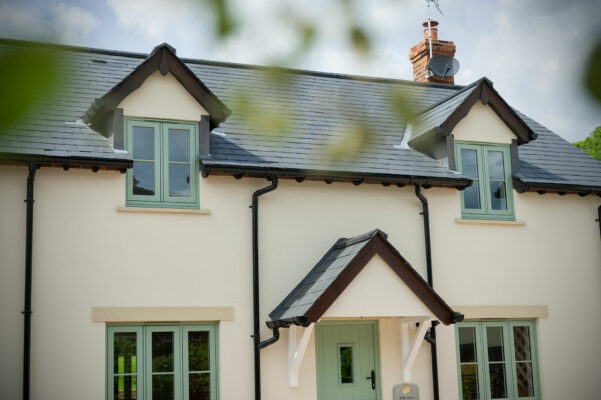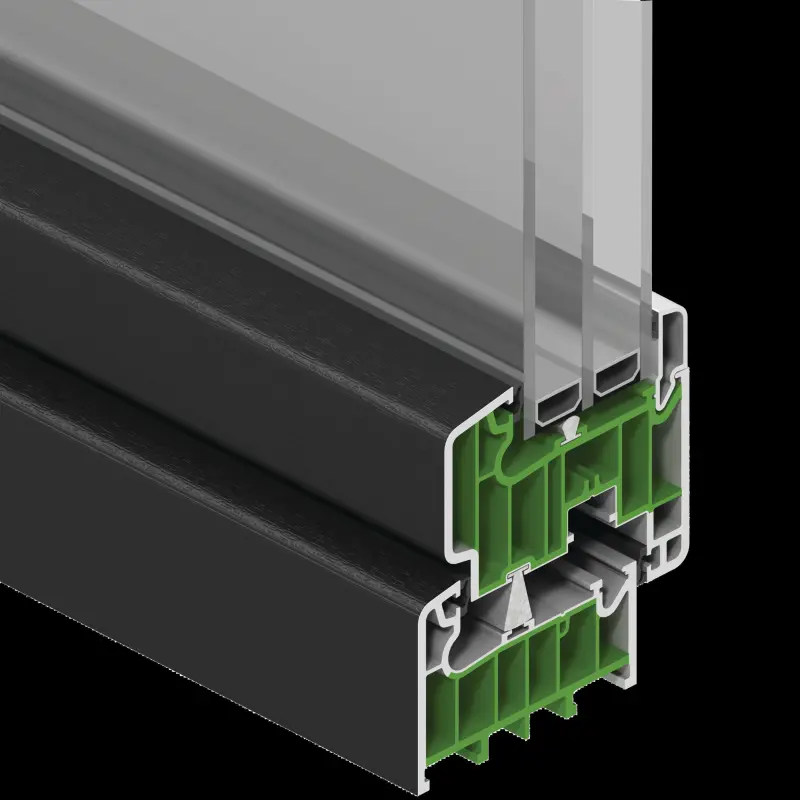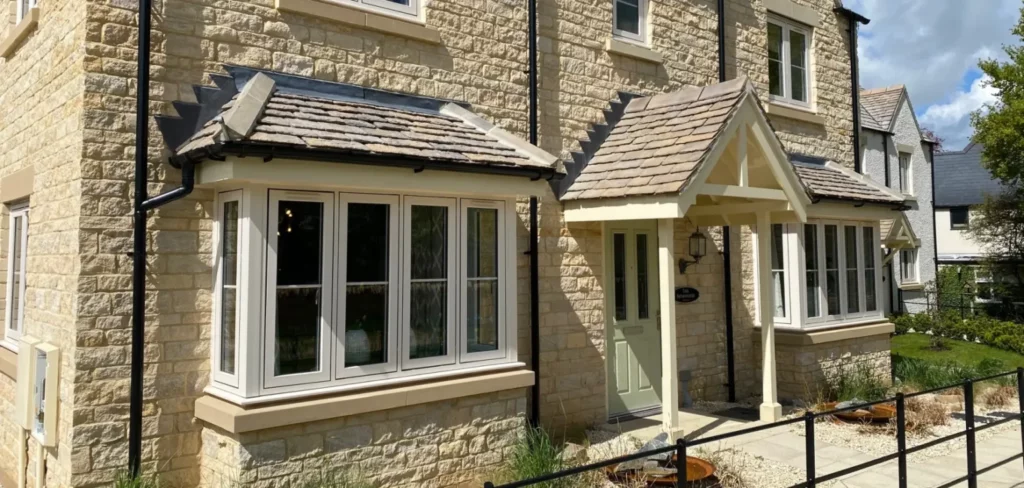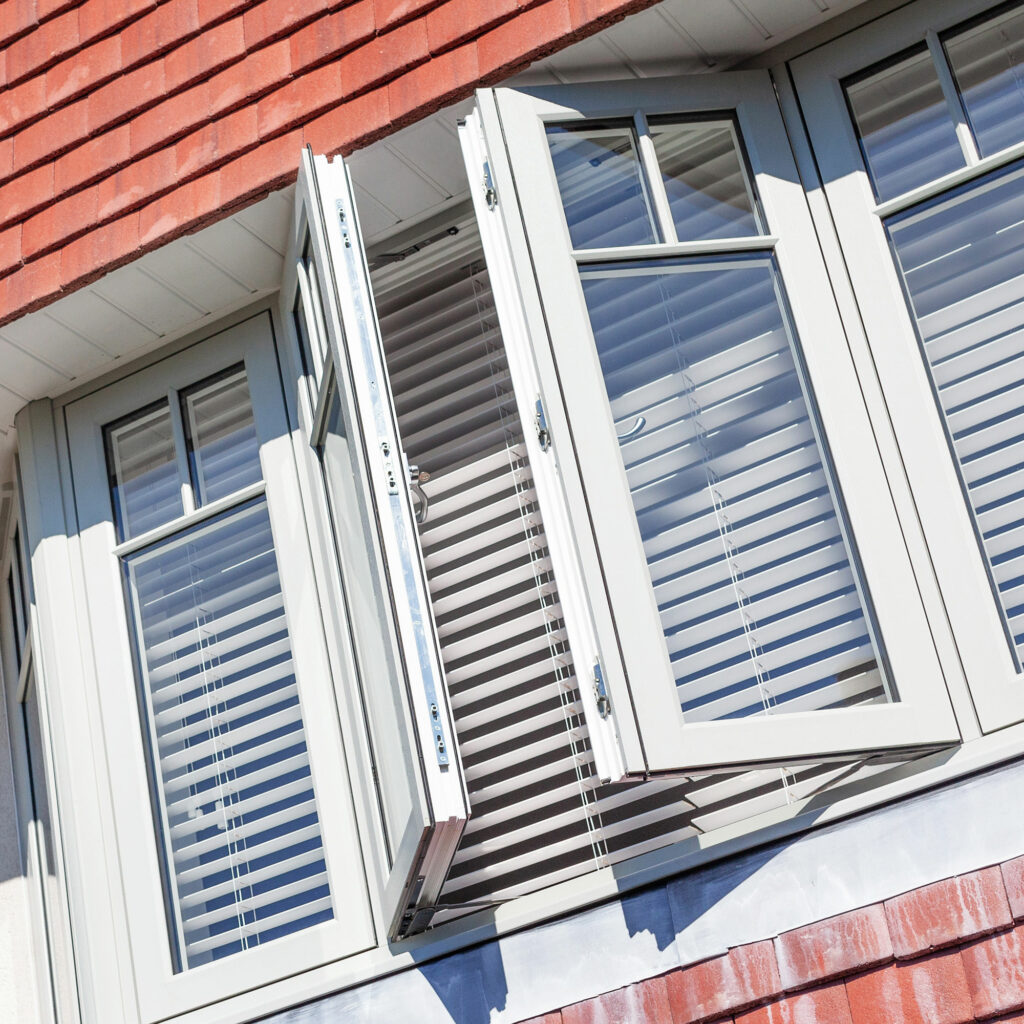Best front door styles for period homes in the South East
Thinking about replacing your front door but unsure what style fits a period home in Kent or Sussex? In this post we explore classic and modern door styles including composite,…
Energy efficient windows can help you save money, stay warm and reduce noise – but which type is right for your home? In this guide, we explore the latest glazing technology, frame options and standout systems like the Residence R7 and R9. Whether you're upgrading your old windows or building something new, this article gives you everything you need to choose wisely.

Energy efficient windows have become an increasingly popular home improvement option for homeowners looking to reduce their energy bills and improve the comfort in their homes. By preventing heat transfer and airflow between the interior and exterior environments, high-efficiency windows can lead to substantial energy savings compared to traditional options. With energy costs continually rising, installing energy efficient windows is one impactful way that homeowners can take control of their utility expenses.
In this post, we will explore the different types of energy efficient windows available and the unique benefits that each provides. We’ll cover the main options available, while highlighting the best energy efficient windows on the market. Our goal is to provide the objective information needed to make an informed decision when looking into this increasingly popular upgrade.

When exploring energy-efficient windows, the details count. Advancements in glazing technology and specialised coatings have unlocked game-changing improvements in thermal performance. By fine-tuning key components, you can now achieve huge energy savings and interior comfort through high-performance windows.
Glazing refers to the layers of glass within the windows, acting as protective barriers between indoor and outdoor environments. Double glazed windows offer a dramatic upgrade from traditional single pane windows, with two panes separated by a spacer to create an insulating air pocket.
However, triple glazing takes efficiency to the next level, with a third pane augmenting insulation even further. Studies show switching from double to triple glazing can net up to an extra 15% reduction in heat loss, not to mention the noise reduction and UV protection benefits of an additional glass layer.
It’s important to note and this is possibly one or the reasons to trust House of Glass for your Home Improvement project, triple glazing is more expensive and unless you are combining benefits such as noise control, it is unlikely that the extra energy saving will give you a positive return on investment over the saving made vs the additional expense.
Specialised Low-E coatings applied to window glass act as essentially an invisibility shield against infrared light. This invisible barrier reflects heat back into the home during frigid winters and outward to prevent overheating in summer. Upgrading to the highest tier Low-E3 coating can dramatically decrease heat loss compared to uncoated glass panes. With this cutting-edge technology becoming increasingly popular, homeowners no longer have to choose between efficiency, aesthetics and affordability.
Filling narrow spaces between glass panes with dense gases rather than air takes efficiency to the maximum level. Chemical compounds like argon and krypton act as expert insulators, reducing the convection and conduction of heat through the windows. With triple glazing and a high-grade Low-E coating already in place, this inert gas infusion ensures you’re saving every penny. Getting these key factors right is what pushes modern windows into record-breaking territory for energy savings and sustainability. It’s how homeowners can literally seal heat and cold out all year round.

In addition to advanced glazing features, the right window frames and operational styles also play key roles in energy efficiency, aesthetics and functionality.
There are several common frame materials to consider, each offering unique advantages:
Highly affordable and requiring virtually no maintenance, uPVC windows provide very good insulation. uPVC is inherently resistant to heat flow and will not warp from exposure to sun and rain. These durable and weatherproof frames are a great choice to cut energy costs.
Known for its slim, sleek profiles, aluminium windows are extremely durable and fully recyclable. While aluminium is very conductive to heat transfer, installing thermal breaks (plastic strips) between exterior and interior frame surfaces significantly improves insulation.
Wood frames offer unparalleled aesthetics and customisation potential. Though requiring more maintenance than other materials, wood’s natural insulating properties enhance efficiency. Modern wood composites resist swelling and shrinking issues that traditional wood is prone to.
Combining components from various materials, composites aim to provide the best of everything – durability, insulation, and aesthetics. Composites like fiberglass reinforced uPVC merge the benefits from multiple sources into a single, high-performance frame.
Different operational styles of windows are designed to cater to specific needs and preferences in your home. Here’s a closer look at some popular styles and their practical applications:
These are hinged at the side and swing outward, offering maximum ventilation. Their design is particularly beneficial for hard-to-reach areas like over kitchen sinks or in bathrooms. Casement windows provide excellent airflow and can be opened and closed with ease, making them a versatile choice for many rooms.
Hinged at the top, awning windows open outward from the bottom, allowing them to keep rain out even when they’re open. This makes them ideal for use in various weather conditions. Their simple hinge mechanism ensures ease of operation, and they are especially effective in providing ventilation and light in compact spaces.
These windows glide along a horizontal track, offering a smooth opening and closing action. They are an excellent option for spaces where an outward opening window is impractical, such as facing patios or walkways. Sliders provide tight sealing when closed, which is beneficial for energy efficiency and security.
Offering a dual functionality, these windows can tilt inwards from the top for secure ventilation and can also turn sideways like a regular casement window for easy cleaning and full ventilation. Their multi-functional design is suitable for various requirements, from providing secure airflow to facilitating emergency exits.
The choice of the right frame and style is influenced by several factors including local climate conditions, the window’s location in the home, specific usage needs and personal aesthetic preferences.
For instance, in areas with frequent rainfall, awning windows might be preferable, whereas casement windows might be more suitable in drier areas for maximum ventilation.

When only the absolute cutting-edge in window innovation will suffice, the Residence collection’s R7 and R9 models shatter expectations. Architecturally replicating older style windows, but infusing today’s most energy efficient advancements, these windows have outperformed many others on the market.
The R9 line in particular, with its staggering 9 internal chambers, rockets to unseen heights in thermal insulation. An incredible 90% of heat is reflected back into homes, with these windows able to withstand even the most extreme weathers. The R7 matches visual aesthetics with 7 slimline chambers and superb efficiency credentials earning Energy Star’s highest certification.
Both R7 and R9 windows utilise a specialised PVC/aluminium composite frame to create an impenetrable thermal seal while retaining structural integrity. Compared to ordinary double and triple glazing, these windows achieve U-factors reaching an incredible 0.8 W/m2K – vastly outperforming standard options to reduce heat transfer by up to 70%.
In their standard configuration, R9 windows attain SHGC ratings as low as 0.2, meaning they block a tremendous 80% of solar radiation from entering homes. With intense summers and excessive UV exposure increasingly problematic, no other model prevents overheating more effectively. The R7 closely matches this top-tier caliber as well.
While even high-end triple glazing windows struggle to breach U-factors under 1.2 W/m2K, the R9 line dominates with ratings reaching 65% better efficiency. There is simply no rivalling the combination of architectural elegance and cutting-edge construction the Residence Collection offers. For homeowners seeking the new gold standard in windows, R7 and R9 models are the most energy efficient.
When it comes to investing in energy efficient windows, the natural question arises – how much is required? With interplaying factors like sizes, glazing types, frames and custom designs substantially impacting pricing, costs can shift.
According to industry standards, basic uPVC double glazed windows average £600-£1,800 depending on precise specifications. Moving into triple glazing with specialty coatings and frames sees costs increase to £1,300 up to £3,600 per window.
While top-tier options like R7 and R9 models carry premium price tags (varying mostly on the size of your home), the unparalleled benefits pay for it.
Studies show A-rated double glazed options can save households over £180 annually in energy expenses. Triple glazing options only add to the savings – even more so with R7 and R9. With utility bills remaining high, this is an important consideration.
Ultimately, precise costs depend on personal needs. To receive an accurate quote tailored specifically to your home, you can reach out to us at any time.
The impact on property value is another crucial factor to consider, and this is where the Residence collection’s R7 and R9 windows truly shine. These windows are not just about energy efficiency; they are a strategic investment that significantly enhances the overall value of your property.
Their contribution to increased property value lies in their aesthetic appeal, functional excellence and long-term cost savings. The R7 and R9 windows add your home’s market appeal in multiple ways:
As utility bills continue to rise, impacting household budgets, transitioning to energy-efficient windows offers a smart and effective solution. Not only does this help to manage energy costs, but it also significantly enhances the quality of your home life.
Our extensive range of energy-efficient windows is designed to accommodate any home and budget, ensuring that this vital upgrade is accessible to everyone.
We also take pride in being authorised installers of The Residence Collection. These windows stand out with their advanced multi-chambered construction and state-of-the-art glazing technology, leading to remarkable energy savings. Opting for these windows could reduce your heating and cooling costs by up to 70% in certain scenarios.
But the benefits of energy efficient windows go beyond energy savings. These windows contribute to a more comfortable home environment too. In winter, they provide warmth by effectively insulating your living spaces, and in summer, they keep your home cool by blocking excessive heat. Additionally, their exceptional soundproofing capabilities minimise outside noise.
At House of Glass, we help you find the best solution for your home, so don’t hesitate to call us today for a no obligation quote.
Best front door styles for period homes in the South East
Thinking about replacing your front door but unsure what style fits a period home in Kent or Sussex? In this post we explore classic and modern door styles including composite,…
What are the benefits of aluminium windows vs uPVC?
Wondering whether aluminium or uPVC windows are the right choice for your home? In this post, we break down the key differences and benefits of each option – from style…
How do I keep my conservatory cool in summer?
Fed up with your conservatory being too hot to use in summer? Discover practical fixes, energy efficient upgrades, and expert advice on keeping your conservatory cool across Kent and the…